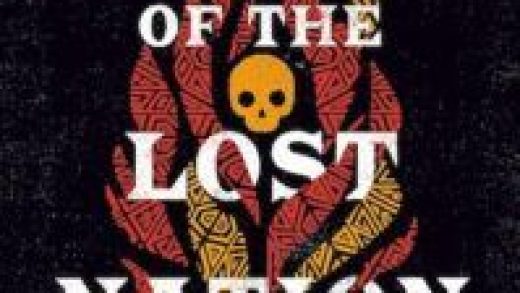The subtitle of Yuval Taylor’s latest work of nonfiction, Zora and Langston: A Story of Friendship and Betrayal, may imply more dramatics than actually occurred. Nonetheless, it proves to be an engaging work that depicts the evolving friendship of two literary luminaries and, sadly, the demise of this friendship. Zora and Langston reflects the individual lives of Zora Neale Hurston and Langston Hughes as budding artists, including the road trip that solidified their friendship and the issues they both faced in sharing their art and viewpoints with the world. Well-known voices from this time period like Alain Locke, W. E. B. Du Bois, Wallace Thurman, Jessie Redmon Fauset, Gwendolyn Bennett, and Hurston and Hughes all had differing opinions on the role of art as a platform for one’s political or personal leanings. Hurston and Hughes’ similar thoughts on the role of their art, their respect for one another’s work, and their relationship with a shared White benefactor (Charlotte Osgood Mason), brought them together. The fall of Hurston and Hughes’ friendship over a theatrical collaboration of the play Mule Bone was rife with misunderstandings, egotism, and internal frustrations. The break is the driving force of Zora and Langston, but this moment speaks to the individuals involved as much as references the pressures of conformity and staying true to one’s developing voice and viewpoints.

Taylor’s previous books have also focused on American history including the slavery anthology series I Was Born a Slave, Dark America: Black Minstrelsy from Slavery to Hip Hop, and Faking It: The Quest for Authenticity In Popular Music. He and I discussed our mutual admiration of Zora Neale Hurston, what drew Taylor to this particular story, and how much tensions arose within the literary world at the time.
Jennifer Baker: I’m familiar with many of your books, several of which have been about Black history in America. But how did you gravitate to Zora and Langston?
Yuval Taylor: In Darkest America, which is about Black minstrelsy, I have a chapter devoted to Zora. Some magazine asked me if I might be interested in writing a short piece for them that tells a story that’s not in the book. And I thought the Langston and Zora story was a good one. So I suggested that but they didn’t follow up. Then I thought that would be a good book. I wanted to write a book that told a story, that told a good story about real people, and as I was writing it I had this idea that a good biography, or a good book about an event or a particular group of people, can be just as rewarding and rich as a really good book of fiction.
I had always loved Zora’s writing. Especially Their Eyes Were Watching God—it’s one of my favorite novels. And I find her such an interesting character. I wasn’t really so sure about Langston at first. The more I got into him and the more I explored his writing, the more I really appreciated what he was doing and saw him as a real American original and someone who really changed the way people wrote.
JB: Is there something that drives you to focus on African American history considering your work about Zora and the slave anthologies you edited and your book on minstrelsy?
YT: It may have been when I was in my teens and I discovered Ray Charles. I read his autobiography and I started reading more and more books by African American musicians, listening to their music. That’s how it all got started.
JB: Is it fair to say it seems as though those books really fed your interests?
Zora was very focused on not playing the victim but playing the hero instead.
YT: Yeah, yeah it did. I think part of it was I’ve always had a bit of a passion for justice and for fairness. And looking at the ways that Whites have mistreated Blacks and have patronized them or worshipped them like Charlotte Mason did while demeaning them at the same time. That’s also a theme in my book Faking It, which has a lot about White people trying to praise African Americans for how primitive they think they are. That’s always been something that’s angered me and frustrated me. And one of the things about the slave narratives that was so interesting to me was how African Americans did not play the victim. And that’s something that Zora was very focused on: not playing the victim but playing the hero instead and actually doing something [in her stories]. And writing is a way of doing that. And so all that kind of coheres.
JB: Speaking of Charlotte Osgood Mason, I don’t want to call her a character, but she is someone who really did have her tentacles in art and art being made. She can really be a puppeteer of sorts. There is the power dynamic but there also the need for Zora and Langston to have their own autonomy as artists. So how did you go about discussing the ways that her influence implements people’s work?
YT: Yeah, there’s this weird power dynamic there. She was a difficult person to write about with sympathy because she just had such a terrible effect on both of their lives and their work. Although she did sustain them and she enabled Zora to do great folklore research and she ended up making Langston’s novel Not Without Laughter a better book. But who knows if he would have attempted a novel without Mason. I don’t know. It was difficult balancing my distaste for her with the fact that I really needed to tell her story. And there were a few good things that she did. My distaste also presented a difficulty because Zora and Langston loved her so much. And that love is so real in their letters to her. She had engendered that love in so many of the people that she met. It’s hard at this distance of 90 years to really make that charisma, that attraction that she had, real.
JB: How do you suggest creators go about utilizing research to actually build a character study?
YT: I guess I would advise one to try as hard as they can to put in details that establish scenes. Writers who think in scenes and can make a real particular event, a particular conversation, a particular place and time, I think is what makes for really good nonfiction. If you try to tell a story in broad terms and leave out those telling details it’s not going to be as rich. What I try to do in this book, as you saw in the chapter subtitles, is focus on those moments [Zora and Langston] were together. If I have to also cover some stuff before and after those moments that’s fine in passing, but I wanted to keep the focus on their friendship and the time they shared together. And that enabled my focus on these meetings with Charlotte Mason in her Park Avenue apartment, the Niggerati getting together in Harlem, or the Fifth Avenue restaurant that opens the book with the big Opportunity magazine dinner. I just wanted to make those moments come alive.
JB: The chapter that strikes me the most is Chapter 3, the summer of 1926. Very clear divisions are drawn within the Harlem Renaissance camps between the Black Bourgeoisie and the “Niggerati,” as Zora had termed her group. How did you go about that particular chapter to show these divisions without really picking a side?
YT: I think I did in a way take Zora and Langston’s side. They were really out to outrage people and they were trying to do something new and very different from what W. E. B. Du Bois and Countee Cullen were doing at the same time. The way I wrote the book was kind of a different approach than most authors take. I wrote a kind of skeleton, a 75-page outline, and then I would just keep adding to it as I did more reading. The structure was all there and I would just put more and more flesh on it as I did more reading and exploration. One of the things that was really fun about it was exploring Langston and Zora’s ideas in this chapter because they expressed them very clearly in their essays.
Langston’s essay “The Negro Artist and the Racial Mountain” and several essays by Zora deal with ideas of what African art is and who the African American people are. Reading other writers on these ideas—I mean David Levering Lewis has written very well on this—it made me think about what was new here and what they were trying to change and what they were reacting against. It was interesting for me to then look at how Langston’s and Zora’s ideas diverged as well as where they converged. And I felt like I was departing from the narrative at moments in that chapter when I was really talking much more about ideas than about the story that I was telling. But I wanted to do that. I think it made the book go deep into questions of race, literature, writing, and class.
JB: I feel a bit more sympathy for Zora because she’s an idol of mine, not to say Langston is not someone I highly admire. But there’s something about Zora, her zeal, her voice, her work that is so pervasive. It seems that there was a careful and protective element there because you mentioned earlier on that you’re such a fan of Zora.
YT: I felt keenly the hurt that she felt when all these people attacked her work, mostly African American men. And it comes across in her later work. She gets so angry at Alain Locke after he gives Their Eyes Were Watching God a bad review. The hurt there seemed palpable to me too. There were so many other things in her life that hurt, and it was mostly men who were treating her like a child.
JB: So did you know the history of minstrelsy when you read Zora? Or was it a snowball effect?
YT: I think I knew enough about minstrelsy to find it distasteful when I started reading Zora. But then years later I discovered there was this whole rich history of Blacks doing minstrelsy that was different from Whites doing minstrelsy. But in the beginning, I think with most people you encounter this dialect, and you associate it with Uncle Remus and you associate it with minstrel shows. You associate it with older ways in Hollywood or Stepin Fetchit. There’s a kind of language that was used by African American characters in movies in the 1930s and ‘40s. And you think this is all just so demeaning, but when you get past the use of dialect you see how Zora was using it in an entirely different way. You see how rich it was and how rich it made her storytelling. If you read her essays, she talks about how she’s using it totally differently from the way minstrel shows did.
At the end when I was writing Zora and Langston, I was reading Langston’s play Mulatto, which he wrote right after he helped write Mulebone. Mulatto uses dialect in a way that Zora would never use it. He says things like “I’s a gwine,” which is totally from the minstrel show. Langston was not as familiar with the way southern African Americans really speak as Zora was, so he just fell back on the way he thought they spoke, which he got from Broadway plays. I would never have known that if I hadn’t read Zora pointing out all the differences between dialect as she wrote it and how dialect had been done in minstrelsy.
JB: This is opinion, but do you think had the play and this potential collaboration not happened between Zora and Langston they would’ve potentially stayed friends considering their bond? It was more than just the collaboration, it’s what’s transpired from this collaboration: the misunderstanding, the miscommunication.
It seems almost inevitable that they would have to collaborate and then they would have to break up after that collaboration.
YT: They wanted to collaborate. And the theater was the thing that made the most sense. If Charlotte Mason hadn’t put them together in Westfield, New Jersey, they probably would have collaborated six months later on something, you know? It was all building toward that. Maybe once Zora had gotten her book of folklore together and Langston at that point had been rejected by Charlotte Mason maybe they would have come together and written something else. They wanted to collaborate together so much and that is because of the great respect they had for each other. I mean they loved each other’s writing. And I can’t imagine them souring on that writing. I suppose the only other thing I can think of is after Langston had become super Communist, if they hadn’t collaborated by then they wouldn’t have collaborated after that. But at the same time Zora would not have been able to put up with that very much. Her idea of what good art is excluded the kind of Communist writings Langston started doing in 1931. It seems almost inevitable that they would have to collaborate and then they would have to break up after that collaboration. Almost like a doomed friendship from the start. That’s with the benefit of hindsight.
JB: It seems so salvageable, I think. Of us being where we are looking back. The way communication works.
YT: But the history of [African American] literature is a history of quarrels. There’s so many great African American writers who quarreled with other great African American writers. Langston quarreling with Zora but Langston also quarreling with Alain Locke. Or Richard Wright quarreling with Zora Neale Hurston. Or James Baldwin quarreling with Richard Wright. It just goes on and on. It’s tough to find a friendship that really lasts.
The post The Doomed Friendship That Helped Define African American Literature appeared first on Electric Literature.
Source : The Doomed Friendship That Helped Define African American Literature












